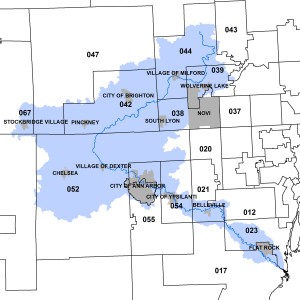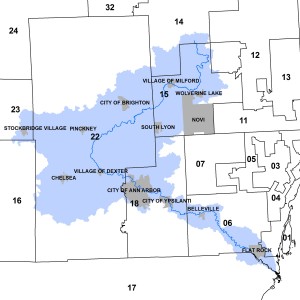Visit me at the office and you’ll find the Citizen’s Guide to State Government for the 98th Legislature within arm’s reach on my desk. During HRWC’s 50th year, we’re making it a priority to establish and deepen relationships with our elected officials through one-on-one meetings. Watershed communities are represented by no fewer than 10 representatives and four senators in Lansing whose votes and decisions can impact the watershed.
What do we hope to get out of these conversations? We are sharing current information on water issues relevant to each district as well as strategic opportunities to protect and enhance the resource for a diverse mix of uses (municipal, recreation, business, etc.). The conversations also are vehicles for developing more regular communications between the elected officials and HRWC.
Simply put: We want the needs and concerns for the river and its watershed communities to be heard.
HRWC Executive Director Laura Rubin and I are wrapping up several months of traveling the watershed – and sometimes beyond – to meet with the following state elected officials (see the maps of Senate and House districts overlaid on the watershed boundary):

Representatives
Gretchen Driskell (District 52)
Jeff Irwin (District 53)
Klint Kesto (District 39)
Bill LaVoy (District 17)
Kristy Pagan (District 21)
Jim Runestad (District 44)
David Rutledge (District 54)
Pat Somerville (District 23)
Lana Theis (District 42)
Adam Zemke (District 55)

Senators
Hoon-Yung Hopgood (District 6)
Joe Hune (District 22)
Mike Kowall (District 15)
Rebekah Warren (District 18)
The conversations were productive and friendly, and most of the officials were very responsive to our requests for meetings. Next steps entail additional information sharing on current projects, and planning a guided legislative canoe and kayak trip on the river to highlight progress and challenges. The frequency of follow-up meetings hasn’t been determined, but we can be certain that term limits will necessitate on-going conversations as new public servants represent the watershed.
The state-level meetings build on a long tradition of engagement from local and county public officials and representatives. In fact, HRWC was formed by the Michigan Legislature in 1965 and the Board of Directors is comprised of representatives from member governments. HRWC is a nonpartisan research and education organization that protects and restores the river for healthy and vibrant communities.



